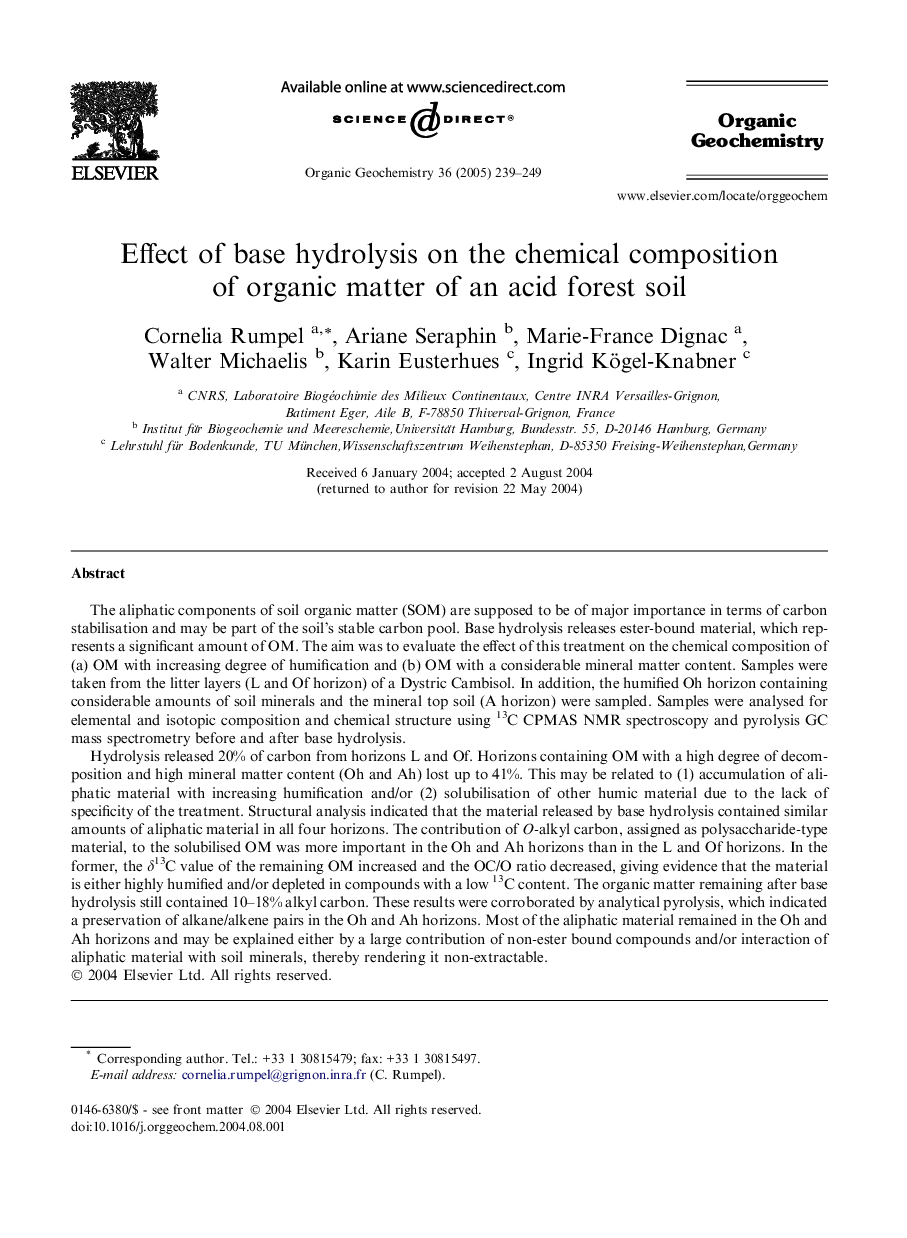| Article ID | Journal | Published Year | Pages | File Type |
|---|---|---|---|---|
| 9556343 | Organic Geochemistry | 2005 | 11 Pages |
Abstract
Hydrolysis released 20% of carbon from horizons L and Of. Horizons containing OM with a high degree of decomposition and high mineral matter content (Oh and Ah) lost up to 41%. This may be related to (1) accumulation of aliphatic material with increasing humification and/or (2) solubilisation of other humic material due to the lack of specificity of the treatment. Structural analysis indicated that the material released by base hydrolysis contained similar amounts of aliphatic material in all four horizons. The contribution of O-alkyl carbon, assigned as polysaccharide-type material, to the solubilised OM was more important in the Oh and Ah horizons than in the L and Of horizons. In the former, the δ13C value of the remaining OM increased and the OC/O ratio decreased, giving evidence that the material is either highly humified and/or depleted in compounds with a low 13C content. The organic matter remaining after base hydrolysis still contained 10-18% alkyl carbon. These results were corroborated by analytical pyrolysis, which indicated a preservation of alkane/alkene pairs in the Oh and Ah horizons. Most of the aliphatic material remained in the Oh and Ah horizons and may be explained either by a large contribution of non-ester bound compounds and/or interaction of aliphatic material with soil minerals, thereby rendering it non-extractable.
Related Topics
Physical Sciences and Engineering
Chemistry
Organic Chemistry
Authors
Cornelia Rumpel, Ariane Seraphin, Marie-France Dignac, Walter Michaelis, Karin Eusterhues, Ingrid Kögel-Knabner,
